2.1 The Beginning of Life

Every person starts life as a single cell, called a zygote. Each zygote is distinct from every other human cell ever created, yet that cell contains genes that have been passed down for thousands of years. The first hours of development are a compelling example of both the universal and the unique characteristics of each human being.
Genes and Chromosomes
First we will focus on the universal. All living things are composed of cells that promote growth and sustain life according to instructions in their molecules of DNA (deoxyribonucleic acid) (see Figure 2.1). Each molecule of DNA is called a chromosome. Chromosomes contain units of instructions called genes, with each gene located on a particular chromosome.
Additional DNA and RNA (another molecule) surround each gene. In a process called methylation, this material enhances, transcribes, connects, empowers, silences, and alters genes (Shapiro, 2009). This non-
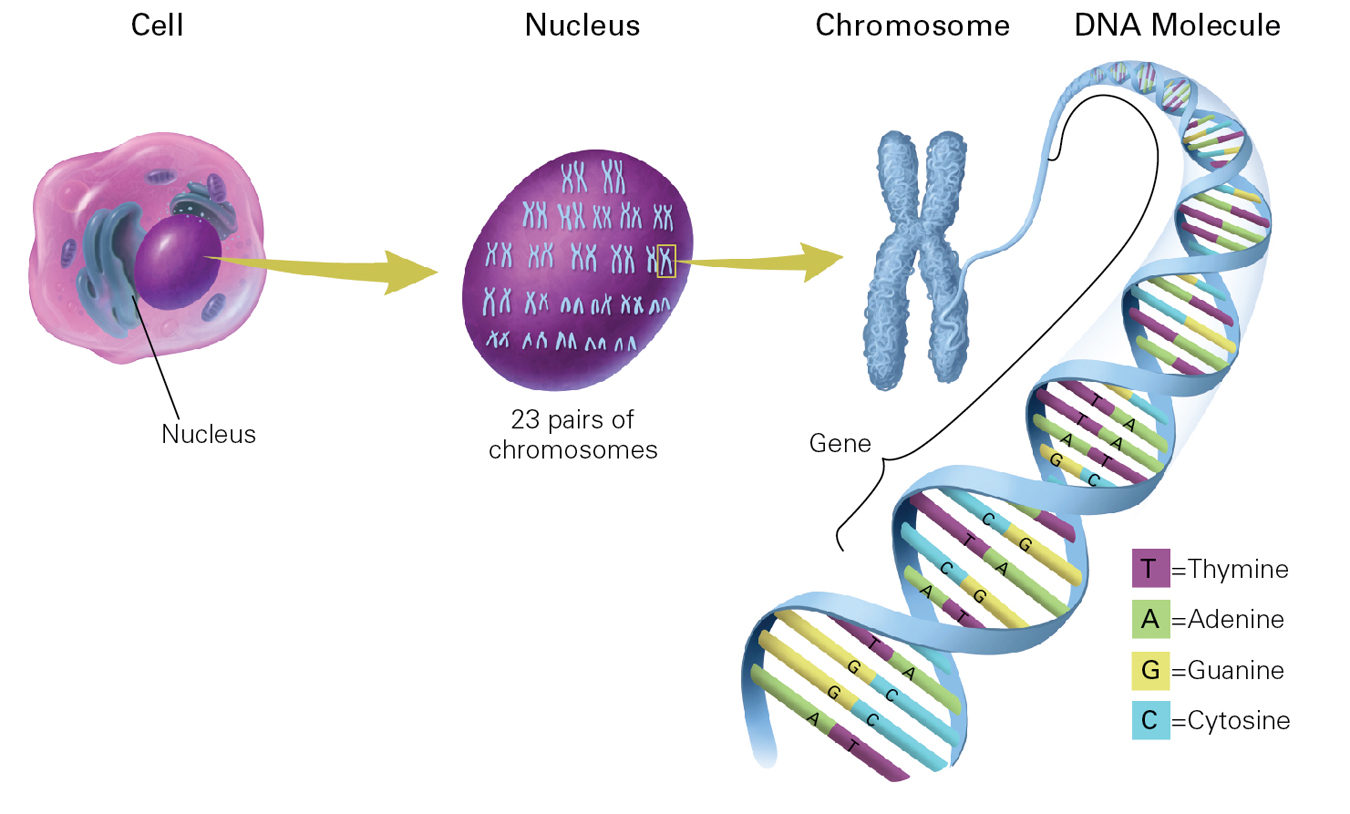
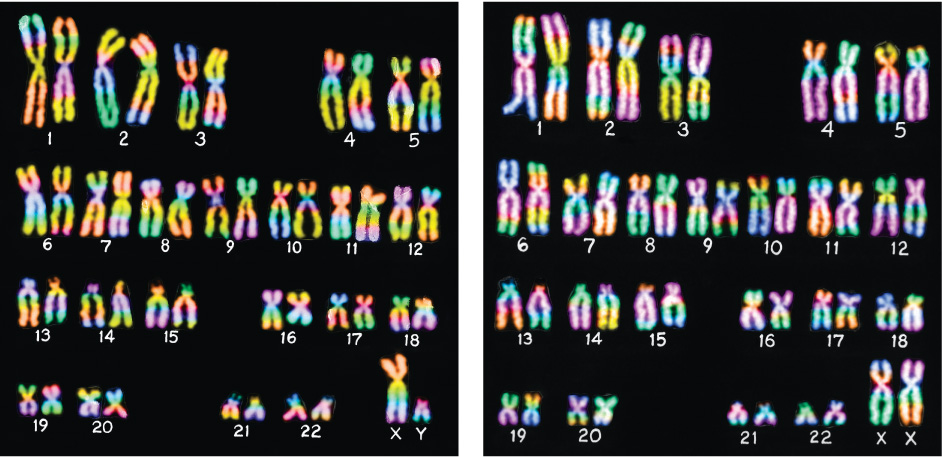
With one important exception, every cell in each person normally has copies of that person’s 46 chromosomes, arranged in 23 pairs. That one exception is the reproductive cell, called a gamete. Each gamete—
Generally, at conception, the genes on each chromosome of the sperm match with the genes on the same chromosome of the ovum. For instance, the eye-
51
Variations Among People
Now let’s focus on the unique part of life. Since each gamete has only one of each person’s pair of chromosomes, each person can produce 223 different gametes, more than 8 million versions of their chromosomes (actually 8 388 608). When a sperm and an ovum combine, they create a new cell in which one of those 8 million possible gametes from the father interacts with one of the 8 million possible gametes from the mother. In theory, your parents could have given you an astronomical number of siblings, each unique.
More variations occur because the DNA code contains 3 billion pairs of chemicals organized in triplets (sets of three pairs), each of which specifies production of one of 20 possible amino acids. Those amino acids combine to produce proteins, and those proteins combine to produce a person. Small variations or repetitions (called copy number variations) in the base pairs or triplets could make a notable difference in the proteins, and thus, eventually, in the person.
And that is what happens. Some triplets on some genes have transpositions, deletions, or repetitions not found in other versions of the same gene. Each of these variations is called an allele of that gene. Genes that have various alleles are called polymorphic (literally, “many forms”) and each variation is a single-
Most alleles cause only minor differences (such as the shape of an eyebrow); some seem to have no effect; some are notable, even devastating. Alleles make one person unlike another. One difference in a triplet could make a person tall, or artistically talented, or red-

Every zygote inherits many alleles from its sperm or ovum, and that means that many gene pairs do not exactly match in every triplet. In addition, mutations that are not in either parent occur as the gametes form. That makes each person a little bit unusual. As one expert said, “What’s cool is that we are a mosaic of pieces of genomes. None of us is truly normal” (Eichler, quoted in J. Cohen, 2007a).
52
Each individual’s collection of genes is called his or her genotype. It was once thought that the genotype led directly to facial characteristics, body formation, intelligence, personality, and so on, but this is much too simplistic.
Because of the numerous epigenetic effects, as well as the interactions among the genes themselves, the phenotype, which is a person’s actual appearance and behaviour, reflects much more than the genotype. The genotype is the beginning of diversity; the phenotype is the actual manifestation of it.
Genetic diversity not only distinguishes each person (you can immediately spot a close friend in a crowd) but also allows adaptation. We are the only species that thrives on every continent, from the poles to the equator. One of the best parts of our adaptation is that we teach each other. If we suddenly found ourselves in a climate we had never experienced, we would quickly learn how to dress, where to sleep, and what to eat from the other people who already had adapted to that place.
Thanks to our genetic diversity, even devastating diseases have not killed us all. For example, a few people have alleles that defend them from HIV, which causes AIDS (Aouizerat et al., 2011). Similarly, genotype differences allowed some of our ancestors to survive tuberculosis, malaria, the Black Death, and other scourges.
More on Shared and Divergent Genes
The entire packet of instructions to make a living organism is the genome. There is a genome for every species, from Homo sapiens to the smallest insect, and even for every kind of plant. A worldwide effort to map all the human genes led to the Human Genome Project, which was virtually completed in 2003 and continues to reveal surprises to this day.
The first surprise was that any two men or women, of any ethnicity, share 99.5 percent of their genetic codes. Similarly, codes for humans and chimpanzees are 98 percent the same (although chimp genes are on 48, not 46, chromosomes). The genomes for humans and every other mammal are at least 90 percent the same. All these shared genes allow scientists to learn about human genetics from other creatures, especially mice, by transposing, deactivating, enhancing, and duplicating their genes.
The more scientists experiment, the more they are amazed. Until 2001, scientists thought humans had about 100 000 genes, but that turned out to be a gross overestimate. The Human Genome Project found only about 20 000–
A more recent international project, called the HapMap, aims to spot all the variations in the human genome. HapMap has found 11 million differences among the 3 billion chemical pairs in humans (Hinds et al., 2005). Some genes are exactly identical for every person, but some have dozens of alleles—
53
Applications of HapMap research are problematic. Much remains to be understood about the connection between alleles in the genotype and actual characteristics of the phenotype. The sheer number of variations is daunting. Scientists know that “genomics is not destiny. Indeed, if genomic sequence ‘determines’ anything behaviourally, it determines diversity” (Landis & Insel, 2008).
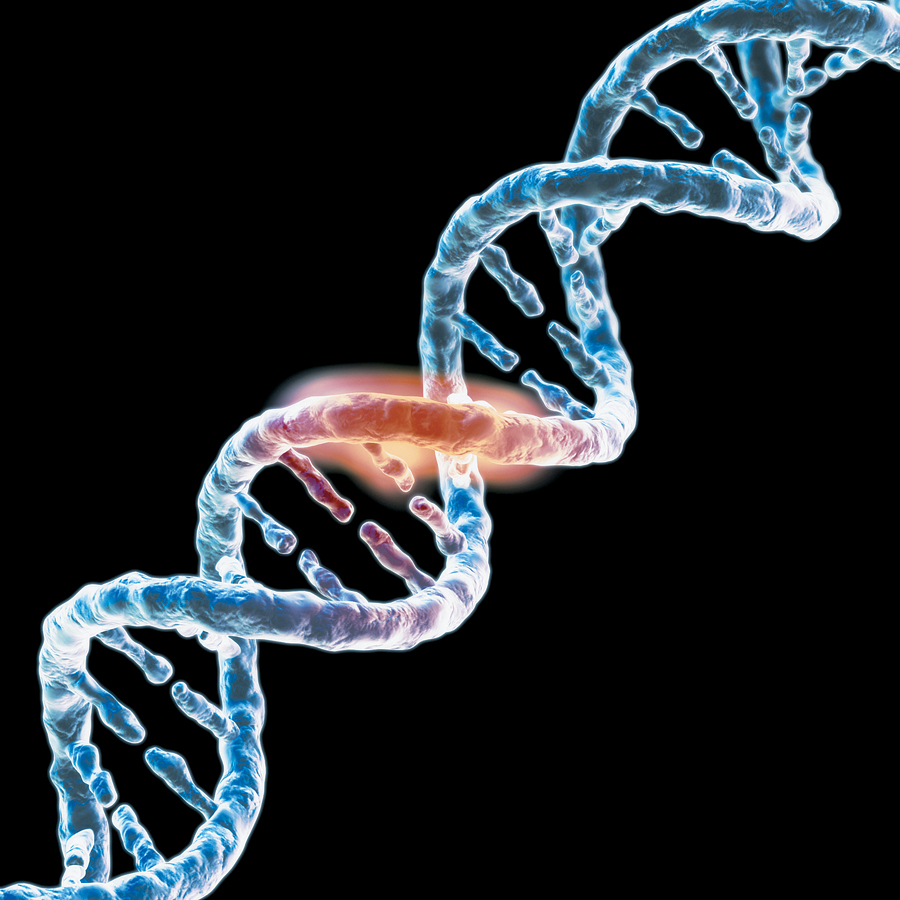
The 23RD PairThe difference between one person and another, and one species and another, begins with the genes, but is much more epigenetic than genetic. The material surrounding a gene can halt, or expand, the instructions from that gene. Hormones, or proteins, or other factors that shape the phenotype begin with a gene but do not end with that. Consider sex differences: They originate from one gene (SRY) on one chromosome, as the following explains.
In 22 of the 23 pairs of human chromosomes that each person inherits, the chromosomes of each pair are closely matched. They are called autosomes, and they could be inherited by a male or female.
The 23rd pair of chromosomes is a special case. In females, it is composed of two large X-
Because a female’s 23rd pair is XX, every ovum that her body creates contains either one X or the other—
The Y chromosome has the SRY gene that directs the developing fetus to make male organs. Thus, the sex of the developing organism depends on which sperm penetrates the ovum—
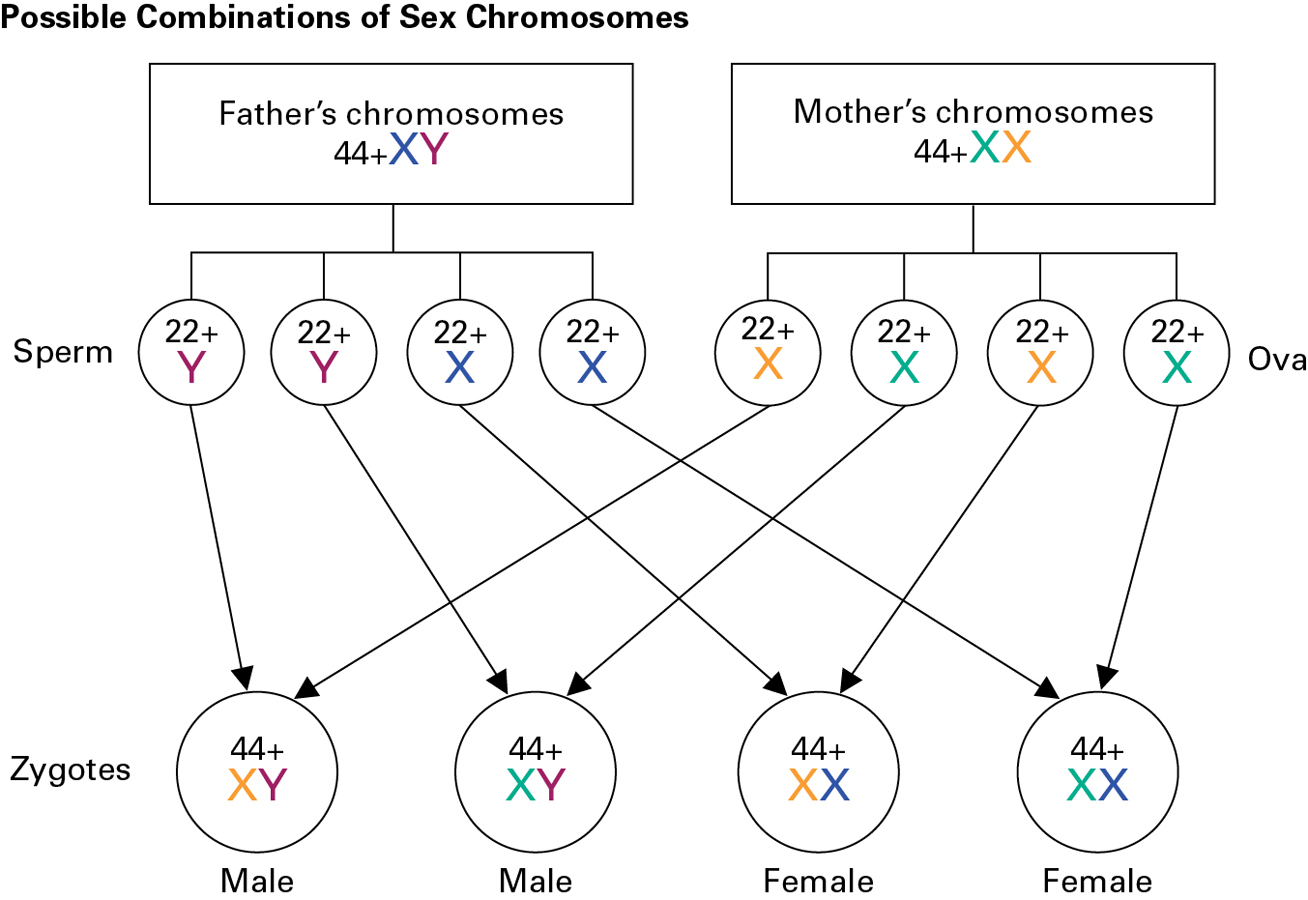
54
At conception, there are about 120 males for every 100 females, perhaps because Y sperm swim faster and reach the ovum first (remember, they carry fewer genes so they are lighter than the X sperm). However, male embryos are more vulnerable than female ones (because of fewer genes, again?) so they are less likely to survive prenatally. At birth, the boy : girl ratio is about 105 : 100. When conditions are stressful (as in a famine), male embryos suffer more. For example, in many African nations (including South Africa, the Congo, Ghana, Nigeria, Kenya, and Ethiopia), the ratio at birth is 102 males per 100 females. In China and India, the ratio is currently higher—
But first note that all the male/female differences—
ESPECIALLY FOR Biologists Many people believe that the differences between the sexes are primarily socio-
Only one of the 48 human chromosomes determines sex, and the genitals develop last in the prenatal sequence. Sex differences are apparent before birth, but they are relatively minor. 
Obviously the impact of that SRY gene is much more than the quantitative fact that it is only one of about 20 000 genes, and only 0.005 percent of the genotype. The SRY gene, via epigenetic factors, affects thousands of other genetic and environmental influences that make for more sex differences than might be expected from 0.005 percent of the genome. Likewise, many other genes are similarly enhanced, promoted, and guided by other genetic material and a myriad of cultural forces.
TwinsThere is one major exception to genetic diversity. Although every zygote is genetically unique, not every newborn is.
About once in every 250 human conceptions, the zygote not only duplicates but splits apart completely, creating two, or four, or even eight separate zygotes, each genetically identical to that first single cell. If each separate cell implants and grows, multiple births occur. One separation results in monozygotic twins, from one (mono) zygote (also called identical twins). Two or three separations create monozygotic quadruplets or octuplets. (An incomplete split creates conjoined twins, formerly called Siamese twins.)
OBSERVATION QUIZ
Can you tell which pair of twins shown below is monozygotic? 
The Chinese girls are the monozygotic twins. If you were not sure, look at their eyebrows, their nose, and the shapes of their faces, compared with the boys’ head shapes and personality.
Because monozygotic multiples originate from the same zygote, they have the same genotype, with identical genetic instructions for physical appearance, psychological traits, vulnerability to diseases, and everything else. However, because nurture always affects nature, even before birth, identical twins do not have exactly the same phenotype.
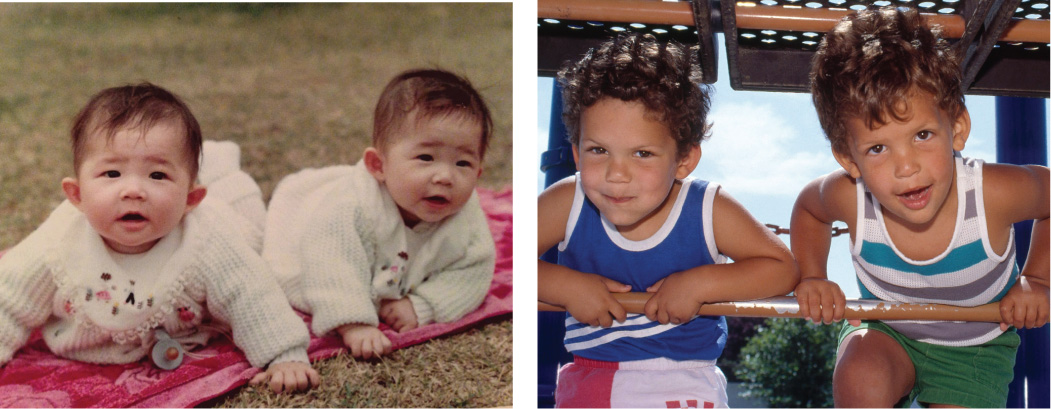
LAWRENCE MIGDALE/GETTY IMAGES
55
OPPOSING PERSPECTIVES
Choosing a Boy
Historically most couples believed that whether a newborn was male or female was up to chance, or God, or fate. If nurture had any role, people thought it occurred via the mother, particularly her diet, prayers, or sleeping position. Although boys were often preferred, most parents accepted whatever came.
For many couples, “whatever came” was more than accepted: Healthy newborns were welcomed. I (Kathleen) have four daughters and no sons. I am convinced this is for the best, and I bristle when anyone implies otherwise. Among my reasons: my children did not suffer from boy/girl rivalry; same-
But some human history is appalling. Female infanticide was accepted in almost every nation. It was so common in the Arab world that Mohammed explicitly forbade it. Wife-
Now humans know better than to blame mothers. But knowing more about conception has allowed couples to select sex before birth by (1) inactivating X or Y sperm before conception, (2) undergoing in vitro fertilization and then inserting only male or female embryos, or (3) aborting XX or XY fetuses. Should that be legal?
In China, the government implemented a one-

On the positive side, this policy cut the birth rate in half and lifted millions of families out of poverty. But it also led to more abortions when amniocentesis revealed a female fetus, and to more newborn girls being available for adoption because their parents wanted to try for a boy. The sex ratio escalated from 107 male newborns for every 100 girls in 1979 to 121 male newborns for every 100 girls in 2005. This meant there was an overall excess of 1.1 million men, and for the population under the age of 20, there were 32 million more males than females (Zhu & Hesketh, 2009).
National governments have come to recognize the problems created by an imbalance of males and females. Consequently, many nations have changed, or are considering changing, public policy. For example, in China and India, prenatal sex determination is now illegal. Unfortunately, prenatal sex selection still occurs (Greenhalgh, 2008). The most recent Chinese census reports 118 male newborns for every 100 girls (Hvistendahl, 2011). Many other Asian nations also have more young boys than girls.
The changes in public policy seem logical, but now consider the opposite view. Most North Americans approve of personal choice, including in sexual matters. For example, if a couple wants four or more children even though that means a greater financial burden on other people in society, they are not stopped—
Similarly, most fertility doctors in North America believe that sex selection is a reproductive right (Puri & Nachtigall, 2010). As one fertility doctor said, “Reproductive choice, as far as I’m concerned, is a very personal issue. If it’s not going to hurt anyone, we go ahead and give them what they want” (Steinberg, quoted in Grady, 2007).
Freedom of individual choice—
56
Usually, monozygotic twins develop their own identities while enjoying twinship. They might both have inherited athletic ability, for instance, but one chooses basketball and the other, soccer. One monozygotic twin writes:
Twins put into high relief the central challenge for all of us: self-
[Pogrebin, 2009]
Dizygotic twins, also called fraternal twins, occur about twice as often as monozygotic twins. They began life as two zygotes created by two ova fertilized by two sperm. (Usually, the ovaries release only one ovum per month, but sometimes two or more ova are released.) Dizygotic twins, like any other siblings, have half their genes in common. Their phenotypes may differ in obvious ways (about half are male/female pairs) or they can look quite similar, again like other siblings.
The tendency to ovulate more than one ovum is influenced by genes, so if a woman has one set of twins, she is more likely to have another set (Painter et al., 2010). Her daughters also have a 50/50 chance of inheriting her twin-
Genetic Interactions
No gene functions alone. Thus almost every trait is polygenic (affected by many genes) and multifactorial (influenced by many factors). Almost daily, researchers describe new complexities in polygenic and multifactorial interaction. It is apparent that “phenotypic variation…results from multiple interactions among numerous genetic and environmental factors” (Nadeau & Dudley, 2011). Here we describe a few of the complexities that occur at conception.
Some genes are additive genes. Their effects add up to make the phenotype. When genes interact additively, the phenotype reflects all the genes that are involved. Height, hair curliness, and skin colour, for instance, are influenced by additive genes. Indeed, height is probably influenced by 180 genes, each contributing a very small amount (Enserink, 2011).
Less common are non-
Most recessive genes are harmless. For example, blue eyes are determined by a recessive allele and brown eyes by a dominant one, which means that a child conceived by a blue-
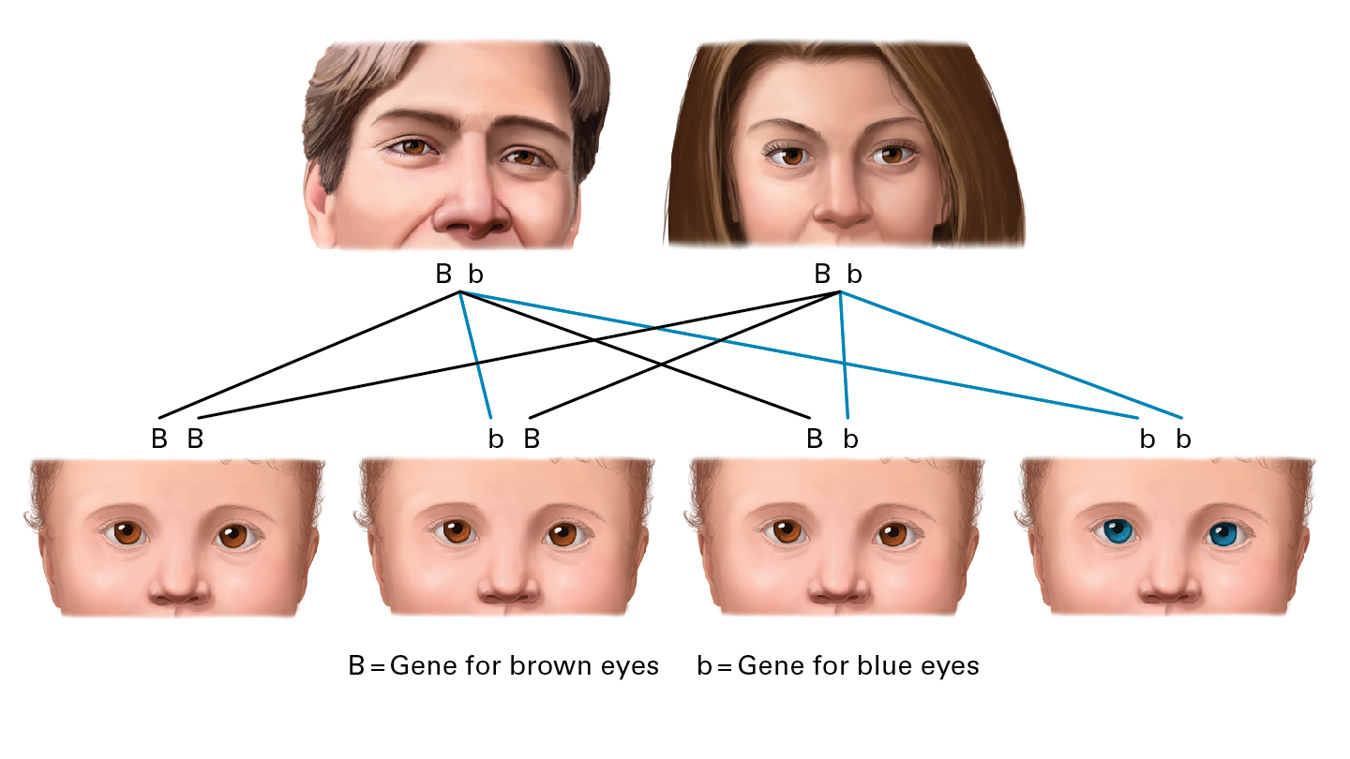
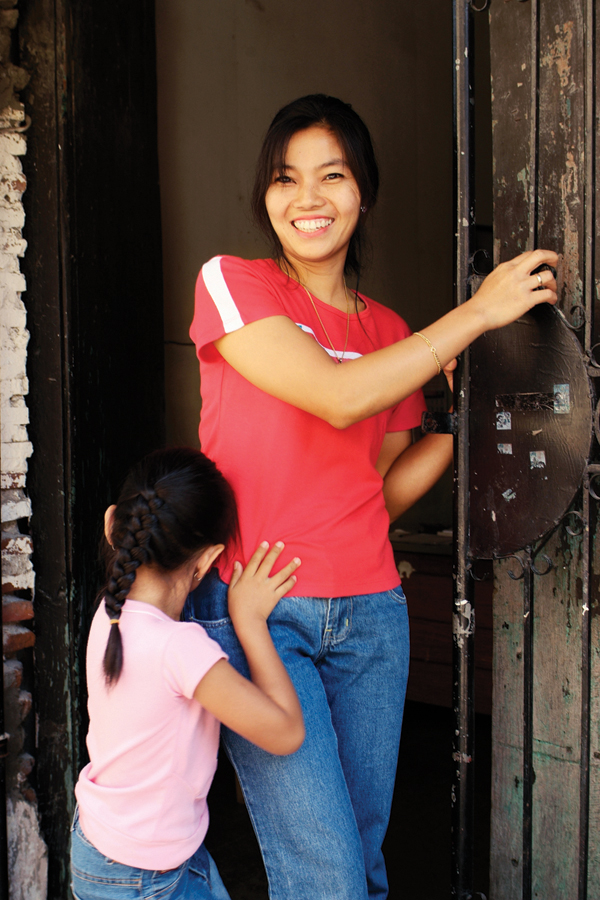
It is also possible for both parents to be carriers, and then their children have one chance in four to inherit the recessive gene from both parents. The complexity of dominant—
57
A special case of the dominant–
ESPECIALLY FOR Future Parents Suppose you wanted your daughters to be short and your sons to be tall. Could you achieve that? 
Yes, but you wouldn’t want to. You would have to choose one mate with whom to conceive your sons, and another for your daughters, and you would have to use sex-selection methods. Even so, it might not work, given all the genes of your genotype. More importantly, the effort would be unethical, unnatural, and possibly illegal. 
| 23rd Pair | Phenotype | Genotype | Next Generation |
|---|---|---|---|
| 1. XX | Normal woman | Not a carrier | No colour blindness from mother |
| 2. XY | Normal man | Normal X from mother | No colour blindness from father |
| 3. XX | Normal woman | Carrier from father | Half her children will inherit her X. The girls with her X will be carriers; the boys with her X will be colour- |
| 4. XX | Normal woman | Carrier from mother | Half her children will inherit her X. The girls with her X will be carriers; the boys with her X will be colour- |
| 5. XY | Colour- |
Inherited from mother | All his daughters will have his X. None of his sons will have his X. All his children will have normal vision, unless their mother also had an X for colour blindness. |
| 6. XX | Colour- |
Inherited from both parents | Every child will have one X from her. Therefore, every son will be colour- |
Since the Y chromosome is much smaller than the X chromosome, an X-
58
Thousands of disabilities begin with genes and chromosomes, as described at the end of this chapter. First, however, we consider the more usual case: the development of a healthy embryo, fetus, and baby.
KEY Points
- Each person’s 46 chromosomes and 20,000 or so genes are inherited from his or her parents, with diversity and commonality part of the process.
- The 23rd pair of chromosomes produces a male (XY) or female (XX), with the father’s gamete the determining factor.
- Monozygotic twins are genetically identical, and dizygotic twins share only half of their genes, like other siblings.
- Genes interact with each other in an additive or dominant–
recessive manner, always affected by epigenetic factors.